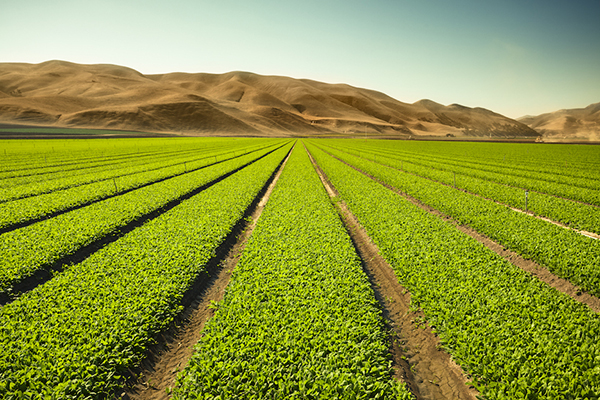Agronomist: Consider History, Not Drought, During Fall Tillage
Farmers should consider the short- and long-term effects of fall tillage on their fields and not just the effects of the drought on this year’s crop, a Purdue Extension agronomist says.
Tillage loosens and rearranges soil aggregates with the intent of establishing a better foundation for crop seed placement and root growth, but the drought itself has already accomplished deep cracking and loosening of some soils. The drought also reduced the post-harvest crop residue that is often used as an additional justification for tillage.
“Tillage decisions should never be based on one year’s crop yield,” Tony Vyn said.
A farmer’s natural reaction to a drought year is disappointment, and that may lead to what Vyn called “revenge tillage.”
“I don’t want farmers to overestimate the need for fall tillage just because of the 2012 drought and poor crops,” he said. “It’s important to adopt a tillage system that leaves topsoil uniformly in place to build up a whole field’s resiliency in root-zone water retention over time.”
He urged farmers to exercise caution and always be aware of the soil loss risk, saying they should examine soil conditions and crop yields over a number of years when considering tillage.
“The early harvest may promote fall tillage, and the disappointment factor may further motivate farmers to till ground,” Vyn said. “But often we don’t know how an individual year’s yields would have changed with more or less tillage.
“It’s been consistent that there are very few yield-related reasons for doing fall tillage on well-drained soils in a corn-soybean rotation. There’s more justification when a field is on a corn-corn rotation or it has poorly drained soils. “
In addition to considering tillage in fields on a corn-corn rotation, Vyn recommended that farmers consider limited fall tillage for fields with a history of compaction, high clay content, lack of systematic drainage or fields with very slow-drying soils.
He also advised farmers to consider the risks of fall tillage on their fields, especially in sloped areas. They should consider the amount of topsoil that could be lost, and the future yield loss in those eroded areas, if they bury residue that could be left to provide protection from runoff.
“Tillage has a permanent effect that can forever change soil water-holding capability on slopes,” Vyn said.
Normally, the protective residue cover and greatly reduced soil disturbance associated with no-till mean less evaporation loss and higher soil water availability to roots. But this year, no-till fields did not provide as much protection against the drought as expected.
The early-season onset of high temperatures and lack of rain limited both root growth and shoot growth in 2012. Corn and soybean varieties differ in their relative rooting ability under stress conditions, but rooting in all varieties after the early seedling stage depends on energy reserves coming from shoot growth.
“The near-surface soil was so dry, lack of tillage meant more resistance to root penetration, meaning corn or soybean plants in those fields sometimes experienced more drought stress before flowering than other tilled fields, despite the crop residue cover,” Vyn said. “But we may never see such a severe, early drought occur with that combination of timing and high temperatures again.
“A later-season drought occurring after deep early root establishment would have favored no-till more.”
If farmers decide to practice fall tillage, they can choose from several management techniques. Standard primary tillage procedures include using a disk, chisel plow, deep ripper, moldboard plow or strip tiller.
Vyn said agronomists favor strip tillage because it allows for minimal soil mixing and residue incorporation while preparing fields for earlier seeding of spring crops, and it can be combined with fertilizer application.
“It’s a proven, versatile tillage practice that creates a warmer, drier zone of soil in the spring that ensures timely seed placement in both corn-soybean and corn-corn rotations,” Vyn said. “Precision automatic guidance systems have also simplified crop row placement in the center of the loosened strips.”
He said there’s still time yet for farmers to decide whether fall tillage is needed for their fields and that they shouldn’t rush the decision. With fall rains, farmers should be cautious and not rush fall tillage on soils that may be too wet.






